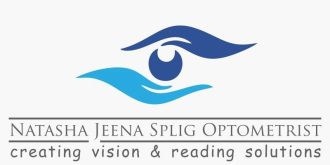Scope of Practice
As a behavioral optometrist, my practice involves conducting comprehensive vision assessments to identify and address vision issues that impact daily activities such as reading and learning.
Through vision therapy, I work to enhance visual skills and processing abilities, adopting a holistic approach that takes into account the patient's overall visual needs and their environment.
Collaborating closely with other healthcare professionals, I focus on managing visual and learning challenges, emphasizing preventive care through early detection and intervention.
A key aspect of my role is educating patients and their families on the importance of maintaining visual health and implementing practices that support long-term vision wellness.


Vision assessments and therapies
Refraction
This test is conducted during the consultation. A standard ophthalmic exam is a thorough set of tests performed by an ophthalmologist or optometrist, who are specialists in eye health. They conduct these tests to assess both your vision and the health of your eyes.


vision assessments and therapies
Primitive Reflex Integration
The development of visual pathways and learning integration is influenced by six key reflexes. Vision involves the entire body, emotions, and thoughts, relying on a network of nerves that mature from the brain and spinal cord to sensory and motor systems, with eye development occurring last. The inner ear's balance system, along with emotions and brain function, affects vision. Blurry vision can impact self-esteem, performance, and relationships, while vision issues are linked to physical problems like muscle tension and dizziness.


vision assessments and therapies
Binocular Vision Assessment
A Binocular Vision Assessment is crucial for evaluating how well the eyes work together. It affects a child’s ability to concentrate, stay seated, switch focus between board and book, copy accurately, avoid skipping text, and maintain focus for near reading. These skills are part of the 17 visual abilities essential for academic success.




vision assessments and therapies
Reversals Assessment
The Reversals Assessment eye test is designed to evaluate visual perception and processing abilities to determine the causes of letter reversal. This assessment helps identify potential reasons for such reversals prior to evaluating for Dyslexia.
vision assessments and therapies
Developmental Eye Movement
The Developmental Eye Movement (DEM) test is used to assess eye movement skills and determine whether issues with automaticity (the ability to perform tasks quickly and effortlessly) or oculomotor dysfunction (problems with eye movement control) are causing difficulties.



Vision assessments and therapies
Digital Eye Tracker
The Digital Eye Tracker software monitors and records a child’s eye movements in real-time as they perform various tasks. This helps to understand how their eyes move and focus, providing insights into their visual processing and attention patterns.


Vision assessments and therapies
Reading Assessment & Reading Remedial Therapy
The Phono-Graphix Read for Africa Methodology addresses the challenge that many children face in understanding the "code" of the English language, as not all children grasp the "whole word concept." Those who struggle with reading can become disruptive or disengaged in class. Phono-Graphix assessments and remediation focus on enhancing both reading and writing skills to support these children.


Vision assessments and therapies
Dyslexia Assessment
Studies suggest that dyslexia affect 20% of the global population. Obtaining an accurate diagnosis—after ruling out all potential vision-related causes—can alleviate frustration for the child and allow for the implementation of suitable remedial support and accommodations.


Vision assessments and therapies
Passive Therapy
Passive therapy encompasses the use of low plus lenses, microprisms, and various other tools. A low plus lens can extend a child's visual field by 2 meters, potentially providing a stress-free classroom environment. Yoked microprisms might be used for a child with poor posture or one suffering from Convergence Insufficiency.


Vision assessments and therapies
Active Therapy
Active vision therapy for children is a structured program of exercises designed to improve visual skills and processing. It involves activities that help children use both eyes together more effectively, enhance visual tracking, and improve visual perception. These exercises are typically done both in a clinical setting and at home, tailored to address specific vision problems


